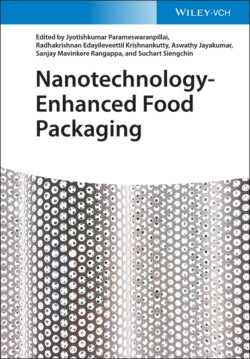Читать книгу Nanotechnology-Enhanced Food Packaging - Группа авторов - Страница 12
1.2 Nanotechnology Applications in Food Processing
ОглавлениеNanostructured food ingredients are developed to facilitate sensory attributes like appearance, taste, texture, and flavor. Nanotechnology increases the durability of different foods and reduces food waste caused by microbial infestation. Nanocarriers are presently used as a supply system without interfering with their basic morphology to transport food additives into food products. The particle size can directly affect the delivery of bioactive compounds to different sites since some cell lines have noticed that it is efficient to absorb only submicron nanoparticles but not larger microparticles [9–13].
Nanotechnology provides effective distribution systems with all the functionality mentioned earlier for encapsulation formulation, emulsions, biopolymer matrices, clear solutions, and colloids. Nano-polymers are intended to replace traditional products for food packaging. Nanosensors may show the existence of pathogenic microbes, toxins, and adulterants in food [14]. Nanoparticles have greater characteristics of encapsulation and release performance than traditional embossing methods. By nanoencapsulation of the masks scent or taste, the interactions between active ingredients and the food network that govern the release of active agents can be monitored. This method guarantees the supply of desired food ingredients at the desired level of production, storage, and usage. This nano-packing method is consistent with other ingredients in the device against moisture, fire, chemicals, and biological degradation. Moreover, these nanotechnologies-based food nutrition delivery systems can reach deep into the tissues and effectively distribute active agents to the target sites in the body because of their smaller scale [15–18].
